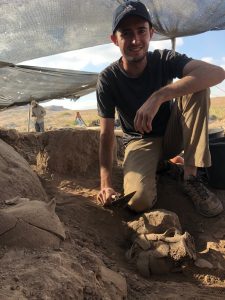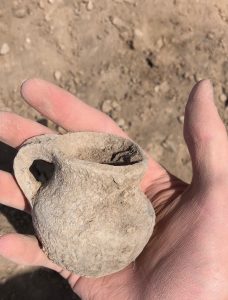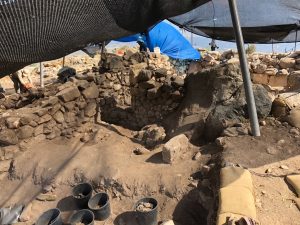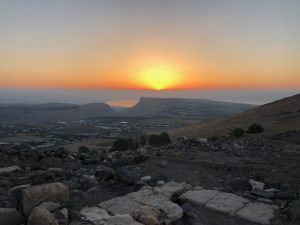
EXPECTATIONS AND REALITY IN ARCHAEOLOGICAL FIELD WORK
Austin Richards, 2018 Platt Excavation Fellowship Recipient
Thanks to the generous funding provided by the ASOR Platt Excavation Fellowship, I had the opportunity to participate in an archaeological dig at a site called Khirbet el-‘Eika in Israel this summer. 
Before this summer, I had never traveled outside the US; in fact, the longest flight I had ever endured was only from Phoenix to Seattle. In the months leading up to the dig, I was not only trying to learn more about the actual methods used in archaeology, but also mentally preparing myself for my first cross-cultural experience, and for the daunting 18 hours of flights from Phoenix to Tel Aviv (with a couple connections) ahead of me. Despite my concerns about culture shock and sleeping on a plane, my main misgivings about the trip related to my lack of prior archaeological training. My own research has, to this point, exclusively revolved around textual sources. Faced with this exciting new field of study, I had many questions: Would I clumsily destroy some priceless artifact? Or would I not find anything at all? Beyond my vague preconceptions about what an archaeologist actually does (which, I’ll admit, were largely derived from the Indiana Jones movies), I didn’t know quite what I was getting myself into.
Once I arrived in Israel and started the dig, I quickly came to realize that the reality of archaeological fieldwork far surpassed my expectations, particularly with respect to the frequency of finds. I was fortunate to have been assigned to excavate a storage room along with two other volunteers. After a couple days of clearing away a 
At the risk of sounding cliché, the most memorable part of my experience at Khirbet el-‘Eika was the wonderful group of people I was able to work with. Dr. Leibner and the Hebrew University students not only provided volunteers with helpful guidance and information, but also created an amiable environment in which friendships could develop. I hope to stay in contact with some of my fellow volunteers, and a few of us are planning to coordinate in future summers and get some of the group back together at another excavation. Once the dust at Khirbet el-‘Eika settled, I found that what I missed most was not the thrill of a new find, but sitting at the breakfast table, listening to friends pitch outlandish ideas for science fiction movies.
As a student of early Jewish and Christian literature, one of the lasting effects of my experience this summer will be a vastly improved mental image of the world behind the text, both in terms of the physical landscape and geographical features of Israel, as well as the elements of material culture that shaped daily life in the ancient Mediterranean world. If one wants to gain a better understanding of the setting in which these writings were produced, there is no substitute for the kind of firsthand experience that comes with participating in an excavation.
While excavation is hard work, it is exceedingly rewarding; from the beautiful sunrise over the Sea of Galilee and Mount Arbel and exciting discoveries throughout the day, to joking around with the other volunteers, there was never a dull moment digging at Khirbet el-‘Eika. My first archaeological excavation was an unforgettable experience, and I am enormously grateful to ASOR and its donors for making it possible.
Austin Richards is a senior undergraduate at Arizona Christian University in Phoenix, AZ. He is majoring in biblical studies with an emphasis in biblical languages and exegesis, and plans to apply to graduate programs in the upcoming application season. His research interests primarily relate to linguistic analysis of the Greek New Testament.


